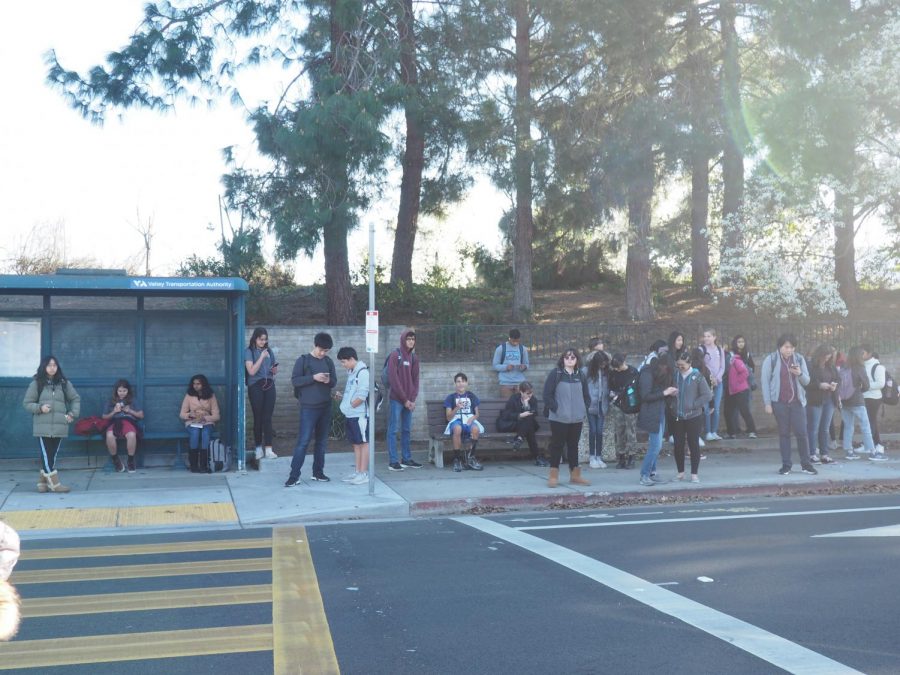New VTA bus schedule causes confusion, inconvenience
Students returning for second semester encountered a bus schedule change due to the Santa Clara Valley Transportation Authority (VTA) enacting a new plan to replace Route 88 with School Trippers (buses) 288, 288L and 288M.
Implemented on Dec. 28, 2019, the VTA’s “New Service Plan” has been in the works since 2016 as part of a service analysis process that takes place every ten years. The main goal of the VTA was to divert services in less central areas of the city to high-traffic areas of Santa Clara County. However, although buses 288, 288L and 288M run specifically on school days, they only operate around school start and dismissal times.
In comparison, the eliminated Route 88 followed an hourly schedule and would make stops in West and South Palo Alto. According to VTA Media and Public Affairs Manager Brandi Childress, the Route 88 did not meet the minimum requirement of 15 riders per hour.
The limited morning bus services have already caused difficulties for students. “For each route, the L, the M and the 288, there’s only one bus that comes in the morning,” junior Vaishnavi Sankaran said. “So if you miss it, you’re kind of screwed.”
To accommodate, Sankaran can no longer sleep in on Wednesdays, despite having a B prep. She has observed other students with similar issues in the mornings and has considered biking as an alternative.
According to Gunn’s public transit coordinator Arthur Keller, more than 100 students take the bus each day, which is about 5% of the student body. These numbers typically increase in the winter during the rainy seasons. Like Sankaran, many of these students are bound to encounter issues with convenience and gaps in bus service.
The lack of hourly services also causes issues in other areas of students’ schedules. For instance, students with preps during the school day can no longer take the bus home. Weeks with alternate schedules, of which there are many, may throw off bus drivers without proper forewarning.
The limited after school services are especially impactful for students with extracurriculars. “There is one bus a little after 4 p.m., but after school at around five and six, students can’t take the bus,” Keller said. “They have to get a ride, drive themselves or bicycle.”
The VTA was aware of the disadvantages of the plan for students, according to Childress. “We knew that this particular service change was not going to be popular with Gunn High School,” she said. “However, our Board-Director Charge said to invest 90% of our constrained operating resources in high ridership corridors and lines, where the most people can be served.”
The announcement of the new schedule immediately received backlash from the community. In a letter to the VTA written before winter break, Gunn’s Parent Teacher Student Association (PTSA) criticized the execution of the plans. “Short notice will make it impossible for the City of Palo Alto to implement plans to fill service gaps that this change will create,” the letter, signed by PTSA president Kimberly Eng Lee, said. “These service gaps will, in turn, cause hardship to school commuting students who are dependent on the bus.”
The letter also requested a postponement until June 2020 to allow students to prepare for changes. The implementation of the plans proceeded nonetheless.
The VTA’s decision also affects the entire community. In response to the limited services, Keller foresees students biking, driving or being driven to school, which will in turn increase traffic congestion in the region.
As a potential remedy, the PTSA asked the VTA to help fund the South Palo Alto Shuttle. For many, this secondary service may be the only viable alternative. According to Keller, with proper community support, the shuttle may run by fall of 2020. He encourages students to email city.council@cityofpaloalto.org to advocate for this solution.
According to Childress, the “The New Transit Service,” will be monitored closely this year. “We will be considering future service changes based on the number of riders in our system…so the New Transit Service could still change,” she said.
Until then, Keller hopes the VTA will improve its methods. “The fact that we have the 288L, 288M and 288 buses does indicate some value of the students as customers,” he said. “However, to some extent, the VTA is still just thinking about butts in seats.”
Your donation will support the student journalists of Henry M. Gunn High School. Your contribution will allow us to purchase equipment and cover our annual website hosting costs.




